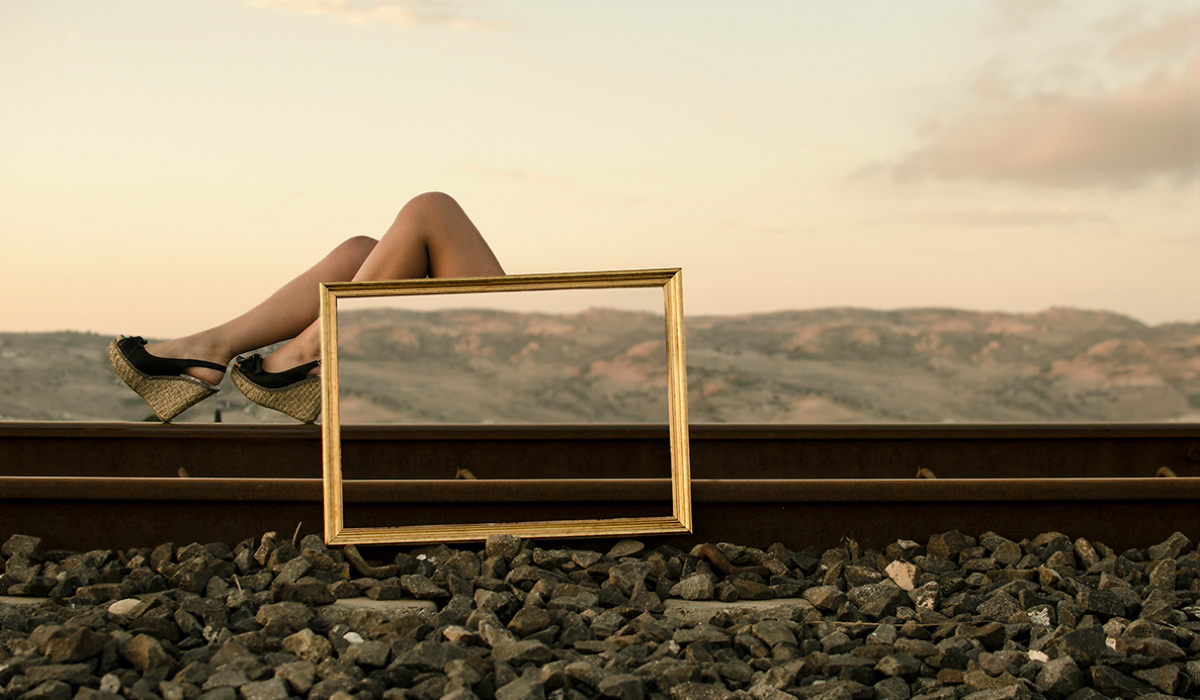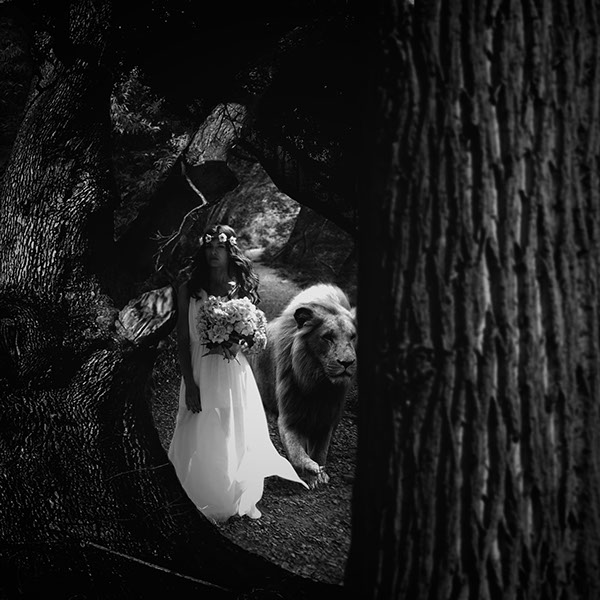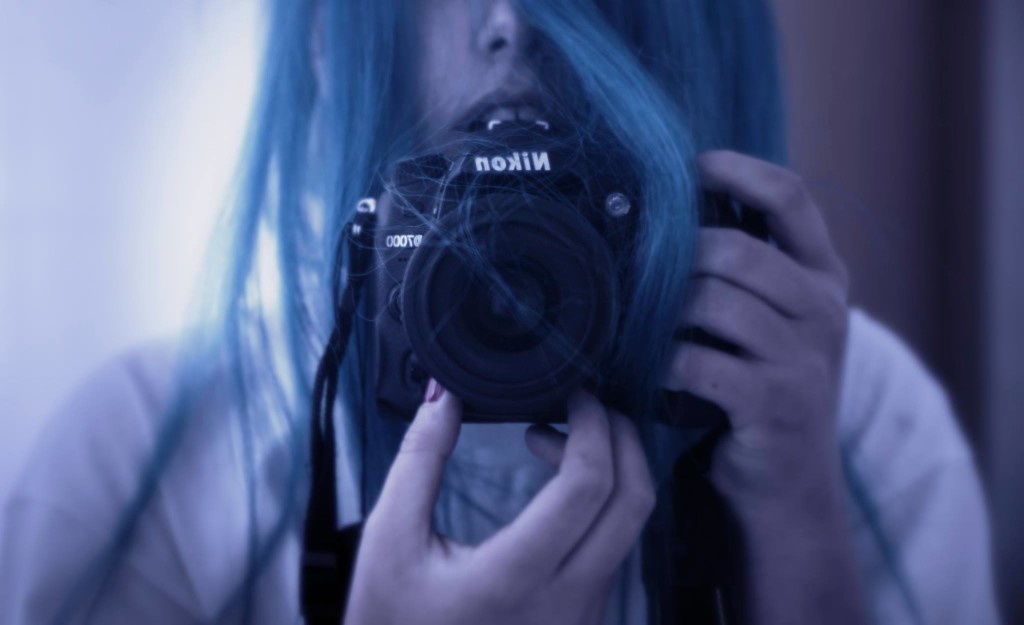Classe 1994, Barbara Scerbo è una ragazza nata a Caltagirone che studia a Roma da qualche anno, prima alla Scuola Romana di Fotografia e, poi, all’Accademia delle Arti e Nuove Tecnologie. Giovane fotografa appassionata di grafica, ha realizzato nel 2013 Illusion, un progetto che ha attirato l’attenzione di numerose riviste, sia italiane, Repubblica è un esempio, che estere. Illusion andrà in mostra al Magic Festival di Edimburgo dal 26 giugno al 4 luglio. Barbara, inoltre, si occupa di tutto l’aspetto grafico di ParlaMente, un’associazione di informazione libera che opera a Caltagirone.
- Per prima cosa ti chiedo uno sforzo di memoria: ricordi il momento in cui realizzasti che saresti diventata una fotografa?
Lo ricordo perfettamente, anche se non riesco a collocarlo perfettamente nel tempo. Avrò avuto 16-17 anni. Ero nello studio di mia madre e vidi un quadro nuovo: era una foto scattata da una sua collega che era stata da poco in India. Quel quadro ha cambiato la mia vita ed ora sono quello che sono. Non mi piace definirmi fotografa e basta, perché la fotografia è stata un punto di partenza che ora si unisce a un percorso grafico che si fonde perfettamente ad essa.
- Nei tuoi scatti esiste un perfetto equilibrio tra pura fotografia ed arte grafica. Parlaci di questa tua scelta stilistica.
La mia scelta stilistica di fondere insieme questi due rami della comunicazione visiva non è stata né progettata né studiata. E’ un qualcosa che ho sempre fatto con naturalezza e senza regole e preconcetti che mi portassero a fare una cosa piuttosto che un’altra. Ovviamente, mi riferisco a tutto ciò che ho realizzato prima di studiare qui a Roma (incluso Illusion). Adesso, tutto quello che prima facevo semplicemente perché era gradito ai miei occhi lo faccio seguendo regole e rifacendomi a tutto ciò che sto imparando. E’ una cosa estremamente positiva ma anche estremamente pericolosa. Non voglio che i miei lavori diventino accademici e schematici. Voglio sempre lasciar spazio a quella spontaneità da cui sono partita. Bisogna disobbedire alle regole, ma è pur vero che per farlo bisogna prima conoscerle.
- Parliamo ora di Illusion. Quale è stata l’idea alla base di questo progetto e cosa intendi comunicare con i tuoi scatti?
Illusion. Grazie a Dio è stato un progetto nato prima che cominciassi a studiare, proprio perché porta con sé quella naturalezza di cui parlavo prima, senza alcuna pretesa di successo e nato per gioco. Era un periodo di fermo per me e per le mie idee. Per ritornare in pista, in quella piccola realtà calatina, dovevo fare qualcosa di più. Così, chiacchierando con un amico, nasce questa idea. Solo in seguito ho pensato di valorizzare i colori e i paesaggi della mia terra e, per far ciò, di prendere delle tipiche bellezze del Sud. Dalla ragazza bionda, alla mora. Inoltre era un progetto che univa più paesini vicini perché ho preso delle ragazze che abitavano non solo a Caltagirone, ma anche nei paesi limitrofi. L’idea di collaborare tutti a un obiettivo comune mi piaceva e, a quanto pare, ha ottenuto grandi risultati e soddisfazioni. C’è chi ha visto in questo progetto interpretazioni profonde, piene di metafore, e chi, invece, mi ha inviato la foto di sé con il frigo aperto che sbucava dal quadro per simboleggiare la ”pienezza”. A me fa ridere tutto ciò e mi rende molto soddisfatta, ma, per questa volta, sono gli altri che hanno trovato un senso.
- Oltre alle foto, pensi anche alle location e al look/outfit delle modelle?
Location ed outfit sono cose a cui penso sempre io. Molto spesso mi occupo anche del trucco. La cosa a cui penso di più, però, è a come le ritoccherò dopo o quale fotomontaggio posso realizzare. E’ una fissazione per me. A volte prendo delle foto venute male e provo a ritoccarle e a far uscire fuori qualcosa: recuperare degli scarti.
- The WalkMan ha come obiettivo quello di scovare e mettere in luce giovani talenti ed artisti che credono nelle proprie idee. Cosa consigli a chi, come te, ha deciso di investire la propria vita nella creatività e, nello specifico, nel mondo della fotografia?
Consiglio di studiare. Consiglio di prendere dei libri della storia della fotografia e immergersi dentro. Consiglio di guardarsi intorno e spendere parte del proprio tempo al computer per ammirare cosa hanno fatto prima di noi e cosa stanno facendo oggi nel mondo. Possiamo svegliarci un giorno con l’idea più sconvolgente e poi magari non ha il risultato sperato perché qualcuno l’aveva pensata già 50 anni fa. Studiare aiuta a tirarsi fuori da certe delusioni e soprattutto allena l’occhio a capire cosa funziona e cosa no. Inoltre bisogna sconfiggere la pigrizia che assale molti di noi. Bisogna avere entusiasmo, creatività e bisogna essere pronti a non arrendersi. Bisogna sapersi vendere e non perdere mai la capacità di mettere se stessi dentro le proprie foto. La poesia, la metafora, la genialità eleva un qualcosa che ormai è alla portata di tutti a un qualcosa di interessante, di nuovo o di reinterpretato. Preparatevi a prendere secchiate d’acqua fredda, ma per chi ci crede e si alza dalla propria sedia penso ci sarà sempre un posto disponibile per dimostrare il proprio valore.
Barbara Scerbo link: Behance
[divider]ENGLISH VERSION[/divider]
Barbara Scerbo born in Caltagirone in 1994 is a young photographer, passionate about graphics. She has been studying in Rome for a few years, at the Scuola Romana di Fotografia first, and at the Accademia delle Arti e Nuove Tecnologie then. In 2013 she created “Illusion”, a project that attracted the attention of many magazines, both Italian, like Repubblica, and foreigner. “Illusion” will participate at the Magic Festival in Edinburgh from June 26th to July 4th. Moreover, Barbara also edits the graphics of ParlaMente, an association of free information that operates in Caltagirone.
First of all I want you to make an effort of memory: do you remember the moment you realized that you would become a photographer? I do remember it, although I cannot place it perfectly in time. I was about 16-17. I was in my mother’s office of and I saw a picture; it was a photo taken by a colleague who had recently been to India. That picture changed my life, and now I am what I am. I don’t like to define myself just a photographer, because photography was a starting point that now joins a graphic path that perfectly blends with it.
In your shots there is a perfect balance between pure photography and graphic art. Tell us about your choice of style. My stylistic choice of merging these two branches of visual communication was neither designed nor studied. It is something I have always done naturally and without preconceived rules that could take me to do one thing rather than another. Obviously, I am referring to everything I made before my studies here in Rome (including “Illusion”). Now, all I did before simply because it was pleasing to my eyes, I do it following the rules and taking up all that I am learning. It is something extremely positive but also extremely dangerous. I don’t want my works to become academic and schematic. I always want to leave room for that spontaneity from which I began. We need to disobey the rules, but it is true that, to do it, you first need to know them.
Let’s talk about “Illusion”. What was the idea behind this project, and what do you want to communicate with your shots? “Illusion”. Thank God this project started before I began to study, because it brings the naturalness I mentioned earlier, without any pretense of success. It was a period of detention to my ideas and me. To return to the track, I had to do something more. So, chatting with a friend, I got the idea. Only later I thought of enhancing the colors and landscapes of my land and, doing it, to take the typical beauty of Southern Italy. It was also a project that united many neighboring villages because I took the girls who lived not only in Caltagirone, but also in neighboring countries. I liked the idea of a working team to a common goal; apparently, it achieved great results and satisfaction. Some have seen, in this project, deep interpretations full of metaphors, and others instead, sent me a photo of himself with the open refrigerator that came out of the picture to symbolize the ‘”fullness”. That makes me laugh and I am also very happy, but, this time, other people found a way.
In addition to the photos, does your work also involve the location and the look / outfit of the models? I always take care of the location and the outfits. I often mind to the make up. The thing I think of more, though, is how I will revise them or which montage I could achieve. It is an obsession to me. Sometimes I take bad photos and I try to adjust them up: I try to recover the wastes.
The WalkMan aims to find and highlight young talent and artists who believe in their ideas. What is your advice to those who, like you, have decided to invest their lives in creativity and, specifically, in the world of photography? I suggest them to study. I suggest them to get books about the history of photography and dive inside it. I suggest them to look around and spend part of their time to see what have been done before us and what it is going on in the world today. One day we could wake up with the most shocking idea and then, maybe, it doesn’t have the desired result because someone had already did it 50 years ago. Studying helps to get out of certain disappointments and, above all, it trains the eye to understand what works and what doesn’t. We also have to overcome laziness that attacks many of us. We need to feel enthusiastic, to have creativity and never surrender. Poetry, metaphor and brilliance elevate to something interesting that is now available to everyone. Get ready to take buckets of cold water, but for those who believe in it and get up from the chair, I think there will always be a place available to prove their worth.
Traduzione a cura di Daniela De Angelis








